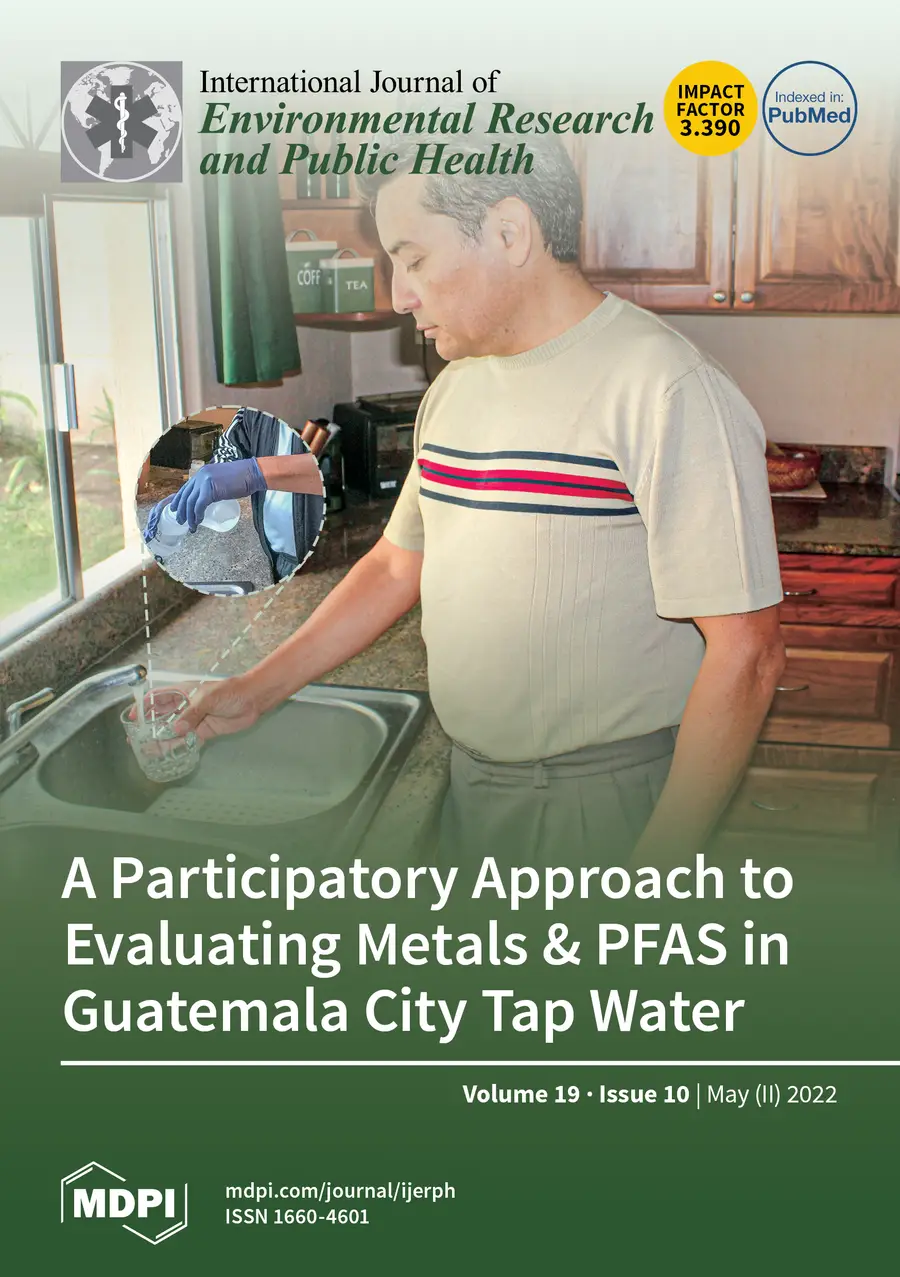Cities are growing across the globe as more people move from rural to urban settings in search of better economic opportunities and services. Guatemala City is the largest city in Central America, with approximately 3 million residents in its metropolitan area. Although economies of scale allow urban governments to provide essential services at a lower per capita cost, the quality and efficiency of these same services depends on available resources, as well as local policies and regulations.
Drinking water is one of the most frequently cited concerns in research on food, energy, and water systems in Guatemala. Most research to-date in Guatemala (and in international water, sanitation, and hygiene research overall) has focused on microbial risks in rural areas. However, chemical water quality monitoring is often limited by lack of funding, laboratory capacity, and regulatory authority, resulting in minimal data on the occurrence and distribution of chemical contaminants in tap water.
We recently collaborated with the Universidad del Valle de Guatemala (UVG) on a study to improve our understanding of urban water quality at the tap in Guatemala City. Our participatory science approach allowed for rapid sampling across the city during the COVID-19 pandemic and engaged the community around water quality. After online enrollment and training, 113 household participants voluntarily collected tap water samples and sent them back via courier or in person at the UVG campus. All samples were subsequently shipped to RTI in Durham, NC for laboratory analysis of metals, including lead, and per- and polyfluoroalkyl substances (PFAS), also known as “forever chemicals.”
Water samples were collected from homes served by a range of water providers across the Guatemala City metropolitan area, including municipal water providers, private water companies, privately-owned wells, and trucked water. Water quality results were correlated to socioeconomic, infrastructural, and geospatial information to evaluate risk factors associated with the presence of chemical contaminants.
So what did we find?
Metals
Out of 20 different metals tested, only 3 were detected above Guatemalan drinking water standards. These included aluminum, lead, and arsenic.
- Aluminum was found above the Guatemalan drinking water health limit in 24% of samples mainly at homes on municipal systems served by surface water supplies. The presence of aluminum is likely associated with the use of aluminum sulfate as a coagulant during conventional surface water treatment and the presence of aluminum-bearing components in concrete storage tanks.
- Lead was found above the Guatemalan drinking water health limit in 8.9% of homes, but findings were not related to location, water source, or type of water provider. Thus, the presence of lead in tap water is most likely related to household piping and plumbing inside the participant homes.
- Arsenic was found above the drinking water health limit in 33.6% of samples, more often in homes connected to groundwater sources. Arsenic is known as a naturally occurring groundwater contaminant throughout Central America, often due to volcanic activity in the region.
Per- and polyfluoroalkyl substances (PFAS)
PFAS are organic human-made compounds used in products globally to make items water-resistant and stain-repellent. PFAS were detected in some households, possibly related to leaching from plastic water storage tanks. Guatemala does not currently have enforceable limits for PFAS in drinking water. To our knowledge, this is the first study evaluating PFAS in drinking water supplies in Central America.
Improving decision making
Overall, our study demonstrates that tap water quality in Guatemala City is affected by many complex factors, including source water (arsenic), the water treatment process (aluminum), household plumbing (lead), and water storage (PFAS). The results provide a broad picture of the challenges and complexities faced by all water providers in rapidly growing metropolitan areas of Guatemala City, Latin America, and around the world. Our results are intended to support decision-making by public health authorities and water service providers in Guatemala and other urban areas throughout Latin America, while also empowering individual residents to understand their water quality and make simple improvements at the tap.
Future water quality research could expand testing at the tap to include additional households and areas, a wider range of microbiological and chemical contaminants, and other factors that can affect water quality (such as variation in hydrogeology near source water intakes, the type of water treatment, the age of water infrastructure, and household water use). Potential contaminants from premise plumbing and storage, including lead and PFAS, represent additional risks requiring further investigation and public engagement.
Improved water quality monitoring in urban zones is paramount to protect public health, ensure public confidence in water service, and make progress toward Sustainable Development Goal 6 for universal access to safe drinking water. Water quality monitoring enables local decision-makers to engage the public, make data-driven decisions to improve drinking water quality governance, prioritize infrastructure investments, and develop policies that protect public health.
To read more about the study, our open-access article is at https://doi.org/10.3390/ijerph19106004.

